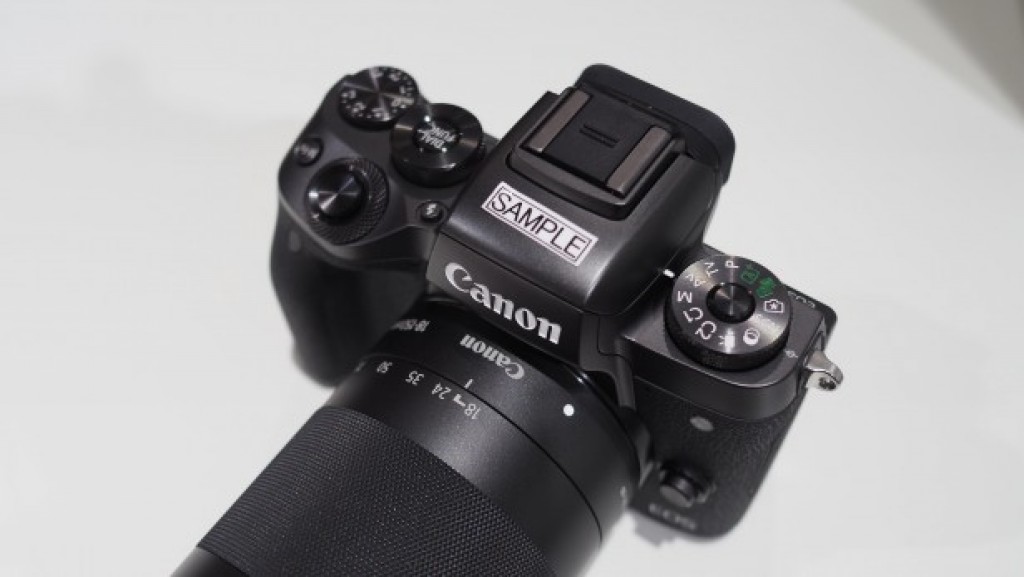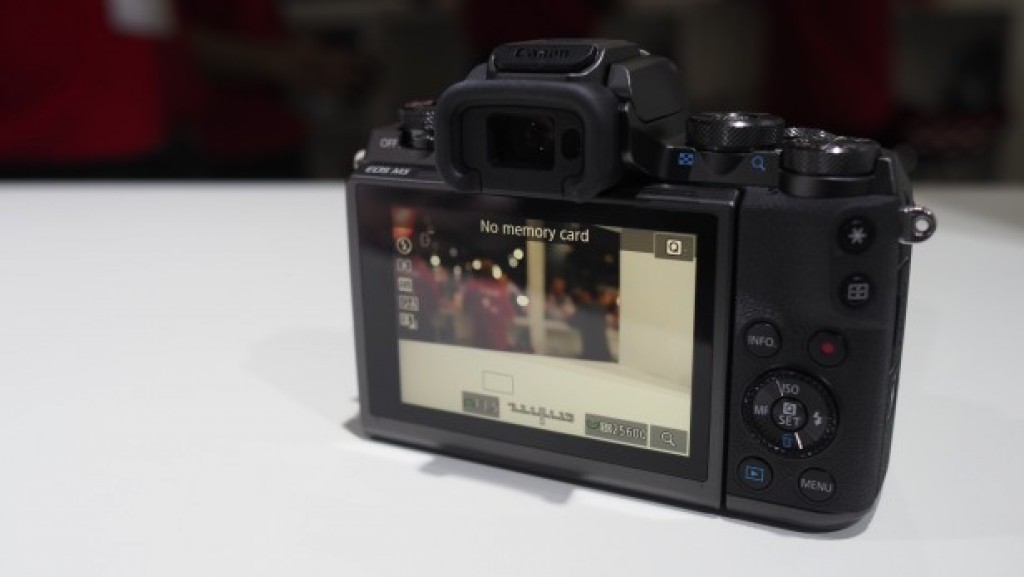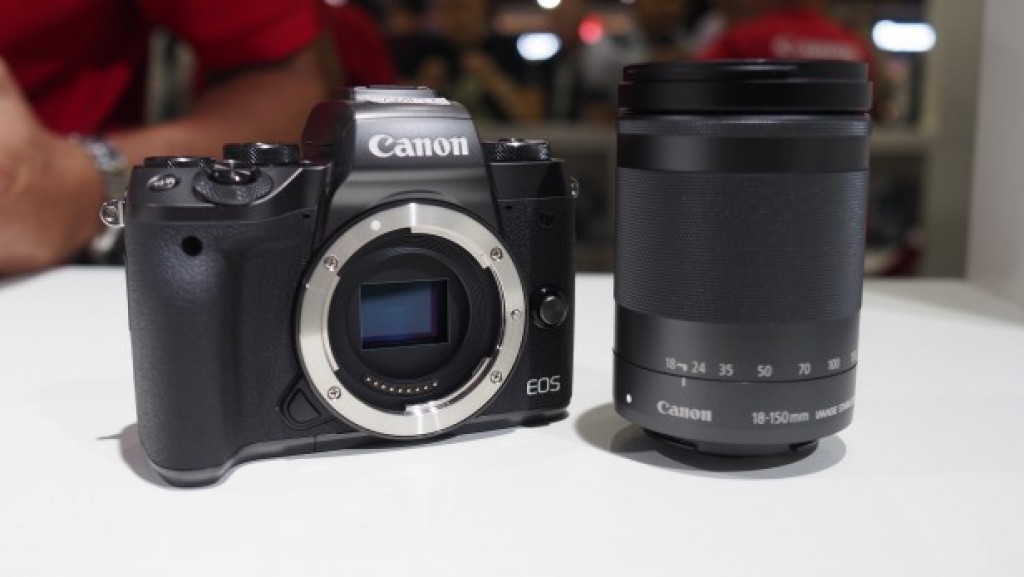
HANDS-ON: AN OPENING LOOK AT CANON’S LATEST MIRRORLESS CAMERA
Canon launched the EOS M5 just a few days before Photokina kicked off, in a clear sign that the company is starting to take its mirrorless proposition seriously.
Its new flagship model features the same sensor as the EOS 80D, a 24.2-megapixel APS-C CMOS number. Other interesting features include Dual-Pixel CMOS autofocus, a Digic 7 processor, ISO capability up to 25,600, an electronic viewfinder, 7fps shooting and Full HD video recording.

CANON EOS M5 – HANDLING
EOS M cameras have always felt like also-rans, but the M5 feels like there’s been some thought put into how enthusiasts and fans of the brand will want to use it.
It has an attractive body shape that’s very Canon. It doesn’t copy the retro designs of other mirrorless cameras on the market, and very much looks like a miniaturised version of one of Canon’s DSLRs. The end result is rather cute, really.
The M5 sits very nicely in the hand, with a satisfyingly chunky grip at the front that’s moulded to fit the shape of your fingers well. The shutter release is positioned well for your forefinger to naturally rest upon it.
Around the shutter release is a rotating dial that controls different settings depending on the shooting mode – for example, aperture for aperture priority. Just behind the shutter release is a second dial that offers customisation: inside the dial is a button you press that allows you to choose between the different options available.
Another dial is handily placed for control via your thumb for altering exposure compensation. It has a good level of rigidity, so you won’t accidentally knock it and create wildly over- or under-exposed images.

Flip to the rear of the camera and you’ll find the majority of buttons located on the right-hand side. This is great when you want to use the camera one-handed, as you won’t have to contort your hand into a weird shape to press the buttons.
The screen is touch-sensitive, which means you can use it to set the autofocus point, or move around various menu and playback options. For this model Canon has added Touch and drag AF. This means you can use the viewfinder while using the screen to set the autofocus point.
This is a feature I first saw in Panasonic cameras and has proven very handy. Canon has gone one step further, however, to add the ability to use only a specific area of the screen to do that. This is to prevent your nose from touching the screen and accidentally setting the AF point – in practice, that’s a great idea and makes it a much more usable solution.
Speaking of the viewfinder, this is the first time that Canon has included one on an EOS M model; enthusiast users will probably be thankful. It offers a bright and clear view of the scene in front of you, but it’s perhaps a touch on the small side – about the same size as the unit on the Fujifilm X-T10, rather than the X-T2. Nevertheless, it remains usable and something that you won’t only use when the screen isn’t practical.
Since there’s a viewfinder in the way, the screen now tilts to face the front at its bottom hinge, making those all-important selfies still possible. The screen also tilts upwards so any low-angle shots are made easier, too.

CANON EOS M5 – PERFORMANCE
I haven’t had too much time with the EOS M5 yet, but early impressions are promising. The camera seemed to lock on to focus pretty quickly; slow autofocus has been something of a problem for earlier EOS M models. I’ll be super-keen to further test its capabilities in this regard to see if the Dual-Pixel AF system offers a workable.
This is the first time Canon has fitted the fast Digic 7 processor to an EOS camera, and this also appears to facilitate faster speeds – in terms of operation, at least. We weren’t able to test the camera with a card inside, but hopefully buffer depth and so on should be quite good. It should also have a positive impact on noise performance in low-light conditions.
As for image quality, hopes are pretty high since the 80D sensor has already proven itself to be an excellent performer. I’ll be keen to see how that gets on in the EOS M body type.

OPENING IMPRESSIONS
While the EOS M5 appears to be a superb camera, there’s a slight feeling that Canon may have left it just a little too late to start taking mirrorless seriously. It’s also a very pricey proposition at more than £1,000 for the body only.
For now, at least, the EOS M5 will ship with a free lens converter for standard EF lenses, with the hope or intention that existing Canon users will use the EOS M5 as a backup or second camera when the bulk and weight of a larger body isn’t practical. While this seems like a good idea in principle, whether it’s one that translates will be interesting to see.
Given the popularity and scope of mirrorless models currently on the market, the Canon EOS M is up against some stiff competition out there. However, if you’re already a Canon fan, then it has plenty going for it.
Look out for a full review of the Canon EOS M in due course.
Source: trustedreviews.com









































